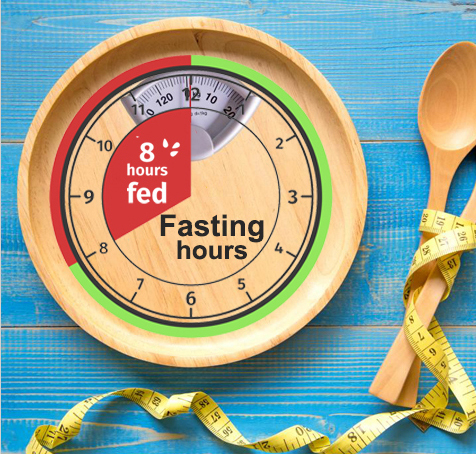Intermittent fasting is an eating pattern in which people have a rhythmic pattern of eating and fasting. They limit their food consumption to a specific time. It is not a diet plan, as it does not limit your calorie intake but restricts your eating hours.
Many people opt for intermittent fasting to adopt a healthier and simpler lifestyle. But some are also fasting for cultural and religious purposes, like in Islam, Christianity, and Buddhism, where people fast at certain times of the year.
Types Of Intermittent Fasting
It’s always your call to decide which fasting time suits you best. Here is a list of different forms of intermittent fasting that you can try:
- Time-Restricted Feeding (TRF): in this genre of intermittent fasting, you designate certain hours for eating, and the rest of them are planned as fasting periods. It has various forms like the 16/8 method, the 14/10 method, the 20/4 method, and the 12/12 method. Out of them, the most popular is the 16/8 method, in which you fast for 16 hours and have an 8-hour eating window.
- 5:2 Diet: In this plan, you have a regular diet plan for 5 consecutive days of the week, and for the rest of the days, you will reduce your calorie intake.
- Eat-Stop-Eat: This includes fasting the whole day. At least once or twice a week, you restrict yours eating for 24 hours.
- Alternate-Day Fasting: in this, you fast and eat on alternate days, meaning some days you can follow your regular eating pattern while on other days you can fast too.
- The Warrior Diet: It includes fasting for at least 20 hours and then having a 4-hour feeding window, mostly at night. You can eat heavy meals during the 4 hours and some raw fruit and vegetables in the fasting hours.
- OMAD (One Meal a Day): as the name indicates, one meal a day. It allows you to eat for an hour and fast for the remaining 23 hours.
- The 36-Hour Fast: it means no food or less calorie intake for up to 2 days. You need to complete 36 hours (about 1 and a half days) of fasting either way.
- The Extended Fasting Protocol: in this protocol, people fast for a longer period, like several days. You must be cautious and should consult a healthcare professional before stepping into this intermittent fasting plan.
It is mandatory to choose intermittent fasting according to your body’s health preferences and lifestyle. Do not copy others; find your own. Moreover, it is appropriate to consult any health care professional before starting any fasting regimen.
How To Start Intermittent Fasting: A Beginner’s Guide
- Choose a Fasting Method: First, decide which of the fasting plans mentioned above suits you best. Opt for a less restrictive intermittent fasting scheme if you have never tried fasting before.
- Consult a Healthcare Professional: Before starting it, it is better to consult a registered dietitian, especially if you have any medical conditions.
- Set Clear Goals: Clarify why you are doing it. whether it’s for weight loss, improved health, a simple lifestyle, or whatever. Write it down, as it will keep you motivated whenever you are feeling low.
- Start slowly: Do not rush the thing; ease your path. Start with less difficulty and gradually increase your fasting duration.
- Hydration is key: Never compromise on hydration. Keep yourself hydrated during fasting hours with water, herbal tea, fresh juices, and non-caloric beverages.
- Choose Nutrient-Dense Foods: At your eating time, choose food wisely. Choose foods high in vitamins, proteins, and minerals to provide your body with all of the essential nutrients it requires.
- Be Mindful of Hunger: Occasional hunger pangs are normal during fasting. You must separate cravings from hunger cues in your body.
- Monitor Your Progress: Record what you experience during intermittent fasting. Either it is weight loss, energy boosts, or mind relaxation. It will help you determine the effectiveness of fasting and modify your routine if required.
- Be Flexible: Like in a diet plan, we have a cheat day; similarly, in It, you can also skip it in case of any special occasion, a festive event, or a friend and family get-together. But make sure to get yourself back on track after it.
- Be patient: Do not be impatient for results. Every individual may respond to intermittent fasting at different times. Thus, wait for your body to accept it and make changes according to it.
- Healthy Lifestyle: Intermix fasting with healthy lifestyle habits like exercise, a morning walk, avoiding junk food, etc. Thus, it will boost the effect of intermittent fasting.
Read More: Five Pro Tips To Cure Junk Food Cravings
- Listen to Your Body: Do not force it on your body. If you find any negative changes in your body, drop the routine and consult a dietitian for a more appropriate plan.
Conclusion
Intermittent fasting has more adherence than traditional dieting as it does not include the fuss of calculating calorie intake. It does not matter what you eat; it concerns when you eat. Thus, its health benefits and effectiveness are increasing its popularity in the health and fitness world.


